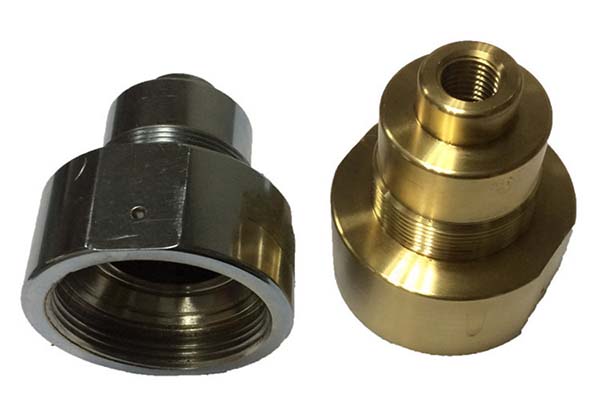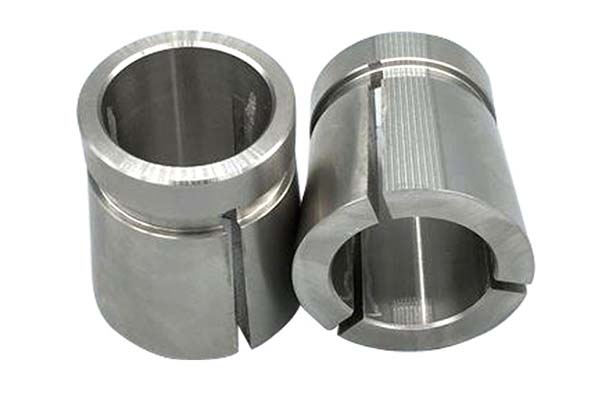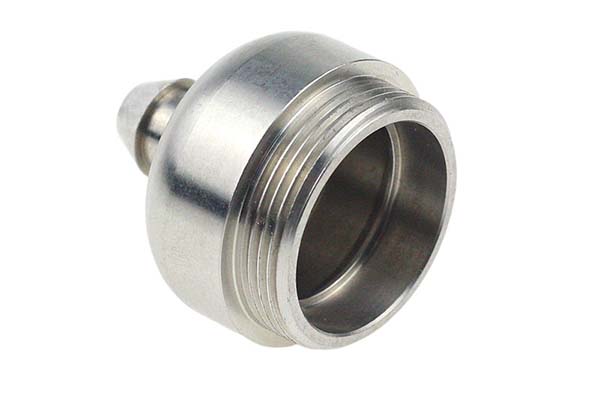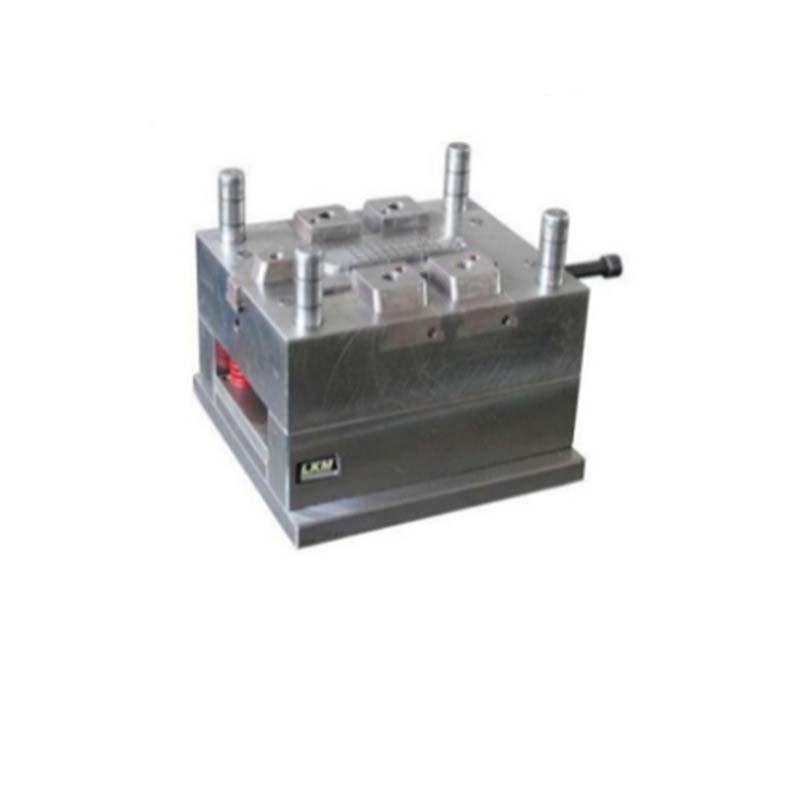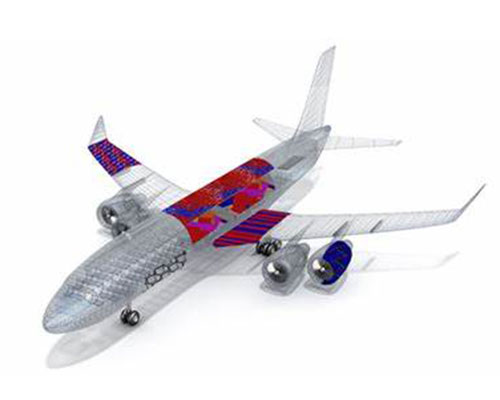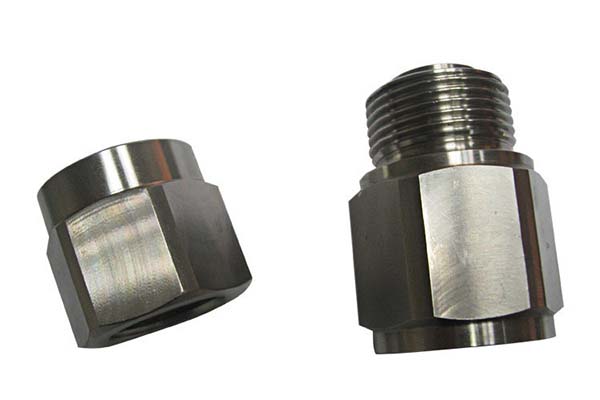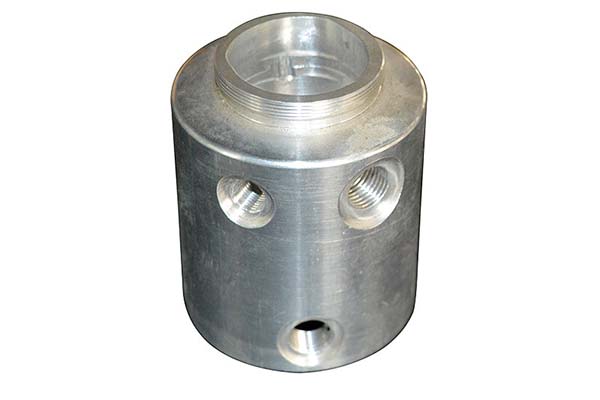C17510 (Nickel-Beryllium Copper) is a high-performance alloy valued for its unique blend of strength, conductivity, and stability. However, machining it comes with challenges, such as handling its age-hardening properties, maintaining tight tolerances, and achieving precise surface finishes. This guide addresses these pain points and provides comprehensive strategies to master CNC machining of C17510.
Alloy Characteristics & Heat-Treatment
C17510, also known as CuNi2Be, is a specialized alloy with a composition of 0.4–0.6 % Be and 1.4–2.2 % Ni. This combination gives it a set of properties that make it highly desirable in various high-demand applications.
One of its key features is being age-hardenable, which means it can be strengthened through a heat treatment process. This allows manufacturers to machine it in a softer state and then harden it to achieve the required mechanical properties.
In terms of electrical conductivity, C17510 offers 45–60 % IACS conductivity, striking a balance between conductivity and strength that makes it suitable for applications where both are important, such as EV fast-charge connectors. Its tensile strength reaches around 760 MPa, and it has a hardness of 98 HRB after heat treatment, providing excellent durability.
The heat treatment process for C17510 typically involves solution anneal + precipitation hardening. Solution annealing softens the material for easier machining, while precipitation hardening (aging) enhances its strength. A notable advantage of this alloy is its low distortion during heat treatment, which helps in maintaining the dimensional accuracy of machined parts.
| Property | C17510 Specification |
| Beryllium Content | 0.4–0.6 % Be |
| Nickel Content | 1.4–2.2 % Ni |
| Electrical Conductivity | 45–60 % IACS |
| Tensile Strength | ~760 MPa |
| Hardness (after heat treatment) | 98 HRB |
CNC Machining Strategies
Solution-Treated Machining vs. Age-Hardened Finishing
Solution-treated machining is the preferred approach for most of the machining process. After solution annealing, the material is softer and more ductile, making it easier to cut and shape. This reduces tool wear and allows for more efficient machining.
Age-hardened finishing, on the other hand, is used for final touches after the heat treatment process. At this stage, the material is harder, so specialized tooling and slower cutting speeds are required to achieve the desired precision.
High-Speed Turning and 5-Axis Milling
High-speed turning is effective for machining cylindrical parts made from C17510, such as aerospace terminals. It allows for efficient material removal when using the right cutting parameters and tooling. However, it requires a rigid machine setup to avoid vibration and ensure accuracy.
5-axis milling is ideal for creating complex geometries in parts like mold cores. This technique enables machining from multiple angles, ensuring that all features of the part are accurately formed, even in intricate designs.
Trochoidal Toolpaths and Chip Control
Trochoidal toolpaths are beneficial for machining C17510 as they reduce the amount of time the tool is in contact with the material. This helps in controlling heat buildup, which is important because the alloy can work-harden if exposed to excessive heat.
Chip control is crucial when machining C17510, as it tends to produce long, stringy chips. Using tools with chip-breaker designs and optimizing cutting parameters helps in breaking the chips into manageable pieces, preventing them from wrap around the tool or workpiece.
Coolant-Through-Tool and Low-Stress Fixturing
Coolant-through-tool systems are highly effective for machining C17510. They deliver coolant directly to the cutting zone, reducing heat and friction, and flushing away chips. This helps in extending tool life and maintaining surface quality.
Low-stress fixturing is essential to prevent distortion of the workpiece, especially when machining thin-walled or delicate parts like medical clips. Using soft jaws or vacuum chucks distributes the clamping force evenly, minimizing stress on the material.
Vibration Dampening
Vibration dampening is important to ensure surface finish and dimensional accuracy. Using vibration-damping toolholders or machine accessories reduces chatter during machining, which can otherwise leave marks on the surface of the part and affect its precision.
Tooling & Cutting Parameters
Carbide Inserts and Coatings
Carbide inserts are commonly used for machining C17510 due to their hardness and wear resistance. Coatings like AlTiN/TiB₂ coating further enhance their performance by reducing friction and increasing resistance to heat and wear.
For micro-machining applications or when achieving extremely precise surface finishes, PCD micro-tools are a good choice. Their hardness and sharpness allow for high-precision cuts.
Cutting Speed, Feed, and Depth of Cut
- Cutting speed: The recommended cutting speed for C17510 is 60–120 m/min. This range balances material removal rate and tool life, ensuring efficient machining without excessive wear.
- Feed rate: A feed rate of 0.05–0.12 mm/tooth is suitable. Adjusting the feed rate based on the cutting speed and the type of operation (roughing or finishing) helps in achieving optimal results.
- Depth of cut: The depth of cut should typically be 0.1–1 mm. Shallower depths are used for finishing passes to achieve a smooth surface finish, while deeper cuts are suitable for roughing operations.
Honed Edges and Tool Wear
Tools with honed edges are preferred for machining C17510. The honing process removes sharp edges, reducing the risk of chipping and improving tool life.
Minimal tool wear is crucial for maintaining consistent part quality. Regularly inspecting tools for wear and replacing them when necessary ensures that the cutting performance remains optimal. Using micro-lubrication can also help in reducing tool wear by providing a thin layer of lubricant at the cutting interface.
Surface Finish & Precision
Ra 0.1–0.4 µm and Mirror Finish Pass
Achieving a Ra 0.1–0.4 µm surface finish on C17510 is possible with the right combination of tooling and cutting parameters. Using PCD tools and optimizing feed rates and cutting speeds helps in achieving this level of finish, which is suitable for applications like aerospace terminals.
For applications requiring an even higher level of surface finish, a mirror finish pass can be performed. This involves using a sharp PCD tool with a slow feed rate and light depth of cut to create a highly reflective surface.
±0.005 mm Tolerance and Roundness
C17510 can hold ±0.005 mm tolerance when machined with precision. This requires tight control over the machining process, including tooling, cutting parameters, and machine calibration.
Roundness < 0.8 µm is achievable for cylindrical parts, which is important for components like spot-welding electrodes that need to fit precisely with other parts.
CMM Validation and Non-Contact Profilometry
CMM validation (Coordinate Measuring Machine) is essential to verify that the dimensions of the machined parts meet the required tolerances. It provides accurate measurements of complex geometries, ensuring quality control.
Non-contact profilometry is used to measure surface roughness, ensuring that the surface finish meets the specified requirements. This is particularly important for applications where surface quality affects the performance or functionality of the part.
Burr-Free Edges
Achieving burr-free edges is critical for C17510 parts, especially those used in medical devices or electrical connectors. Using sharp tools, optimizing cutting parameters, and implementing post-machining deburring processes (such as vibratory finishing or laser deburring) helps in achieving this.
Target Applications & Industries
EV and Aerospace
EV fast-charge connectors benefit from C17510's good electrical conductivity and high strength, ensuring efficient and reliable charging. In the aerospace industry, aerospace terminals made from C17510 offer excellent performance in harsh environments, thanks to the alloy's strength and corrosion resistance.
Welding and Oil & Gas
Spot-welding electrodes rely on C17510's ability to conduct heat and electricity, as well as its resistance to wear. In the oil and gas sector, MWD tools (Measurement While Drilling) use the alloy for its stability and durability in downhole conditions.
Telecom and Medical
Telecom springs made from C17510 provide consistent force and conductivity, ensuring reliable signal transmission. Medical clips benefit from the alloy's biocompatibility and strength, making them suitable for use in medical devices.
Other Applications
Non-sparking fasteners and mold cores are other applications where C17510 excels. The non-sparking property makes the fasteners safe to use in hazardous environments, while the alloy's stability and polishability make it suitable for mold cores that require precise replication of details.
Yigu Technology has extensive experience in CNC machining of C17510 (Nickel-Beryllium Copper). We understand the unique properties of this alloy and use advanced tooling, optimized cutting parameters, and strict quality control to deliver high-quality parts. Whether for EV components, aerospace parts, or medical devices, we ensure that our C17510 machined parts meet the tightest tolerances and surface finish requirements.
FAQs
- What is the difference between C17510 and C17200?
- C17510 has a lower beryllium content and higher nickel content compared to C17200. This gives C17510 better electrical conductivity (45–60 % IACS vs. 22–28 % IACS for C17200) but slightly lower tensile strength.
- Can C17510 be machined after age hardening?
- Yes, but it is more difficult due to increased hardness. It is generally recommended to do most of the machining in the solution-treated state and only perform final finishing after age hardening.
- What is the best way to prevent tool wear when machining C17510?
- Using carbide inserts with AlTiN/TiB₂ coating, maintaining proper cutting speeds and feeds, and using coolant-through-tool systems to reduce heat and friction are effective ways to prevent tool wear.
